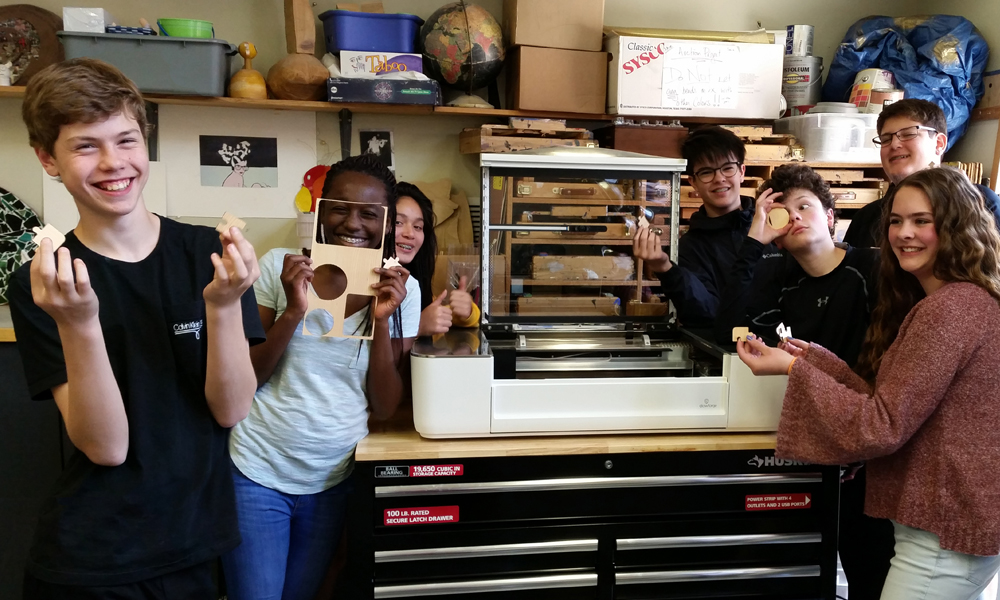Inspiring Innovation
By Joanna Manning

The lower school “makery” might seem, to the casual observer, to be little more than a closet filled with junk. There are scraps of wood and pvc pipe arranged neatly on the shelves; guts of various electronics are laid out on the floor. Odds and ends that might normally be thrown away—lids in interesting shapes and sizes, for example—are sorted into bins, waiting to be repurposed.
Twice a week, science teacher Gabriel Newton opens the makery during recess and gives students access not just to the “junk” but to the tools that are meticulously arranged in his tool chest. As soon as the makery doors open, students scramble to get inside, ready to hammer and saw and hot glue raw materials together into interesting new creations. Their excitement is palpable. It’s kinesthetic learning at its finest.

For Lower School Assistant Director Nicholas Zosel-Johnson, the makery’s value is obvious, particularly with regard to teaching soft skills. “I was watching these four boys who have honestly had a hard time negotiating and cooperating. And they were dutifully, carefully, using tiny screwdrivers to take apart a hard drive, and they were getting along and having a great time. That’s what great social learning looks like.”
Maker spaces have been burgeoning for the past several years, in part due to the widespread availability of laser cutters and 3D printers, which make designing and creating prototypes faster and cheaper than ever before. Just as services such as YouTube turned passive audiences into active creators of content, the maker movement empowers everyday people to innovate rather than simply be consumers of technology.
 Middle-school art teacher Christopher Hoppin wants to give Charles Wright students more opportunities to be innovators. “We really hope to redesign multiple spaces on campus to be more 21st-century in our approach to hands-on learning. Maker spaces, robotics–all that is very much in our plans.”
Middle-school art teacher Christopher Hoppin wants to give Charles Wright students more opportunities to be innovators. “We really hope to redesign multiple spaces on campus to be more 21st-century in our approach to hands-on learning. Maker spaces, robotics–all that is very much in our plans.”
Well-designed maker spaces encourage creative problem solving and cooperation to be certain, but beyond that, the maker ethos is one that recognizes aesthetics as an integral part of technology. Mr. Hoppin and upper school science teacher Jon Lamoreux have been developing programs that attempt to restore the balance between technology and design.
 “That’s what we’re really going for” Hoppin says. “The best idea in the world doesn’t work without good design. And on top of that, it doesn’t work without a good presentation of that idea. So, you really tie in English and arts and science. That’s the beauty of ‘making.’ It really encourages collaboration.”
“That’s what we’re really going for” Hoppin says. “The best idea in the world doesn’t work without good design. And on top of that, it doesn’t work without a good presentation of that idea. So, you really tie in English and arts and science. That’s the beauty of ‘making.’ It really encourages collaboration.”
In a few years, the kids who worked together in the lower-school makery to deconstruct a hard drive might channel that curiosity into designing and creating something entirely new. That is the promise of the maker movement: innovation is limited only by the imagination.

